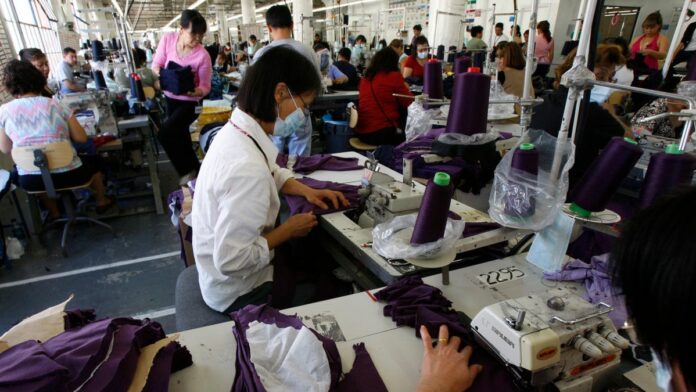Popular athleisure apparel brand Beyond Yoga agreed to pay $1.1 million in back wages and damages to 165 California garment workers who were not paid overtime by its contractors, the US Department of Labor (DOL) reported this week (Jan. 3). It’s the largest settlement in history for California workers employed in the industry, who are paid some of the lowest wages in the US.
Beyond Yoga was worth $400 million in 2021, when it was purchased by Levi Strauss. Its leggings retail for about $100. Like many brands, the company relies on garment-sewing contractors to stitch together its products. In the US, such contractors pay workers as little as $1.58 an hour in the most egregious cases.
Of the nearly 100,000 US garment workers, about half work in the city of Los Angeles, most of them women and immigrants from Asia or Latin America. The DOL found that Beyond Yoga’s contractor Good Cash LLC and its associates willfully withheld overtime pay from employees, who worked an average of 52 hours a week. They also falsified records and issued fake checks to cover up their tracks.
According to the government, Beyond Yoga updated its code of conduct for contractors as part of the settlement. The company did not immediately respond to Quartz’s request for a comment. Good Cash was made to pay $200,000 in civil penalties for violating federal labor law. The contractor had faced allegations of similar violations in the past.
👕 US garment workers, by the digits
95,000: The number (pdf) of garment workers employed in the US
45,000: The number of garment workers in Los Angeles, the nation’s “garment production capital”
$9 billion: The value of the US apparel industry
$1.58: The lowest hourly rate earned by US garment workers in fiscal year 2022, according to the DOL
80%: The share of contractors that had one or more violations of the Fair Labor Standards Act
60: The typical number of hours worked by employees in the industry
2021: The year California passed the Garment Worker Protection Act, which outlawed the piece-rate pay scale in the state, in which workers were paid for tasks rather than by the hour. One worker interviewed by The Nation in 2023, for example, received only $50 for a 12-hour day
32%: The share of contractors who continued paying piece rates even after the new California law prohibited it
2022: The year the FABRIC Act was introduced by US senator Kirsten Gillibrand and US representative Carolyn Maloney, both from New York, to nationally reform the piece-rate pay scale, set an hourly minimum wage, and hold employers accountable
🌎 Zooming out: Garment workers across the globe
Around the world, garment workers face similar, and often more extreme, labor rights violations. A report from the Clean Clothes Campaign, an international labor advocacy group, found that workers in seven major production countries in Asia
were owed nearly $12 billion in unpaid income and severance.
In Bangladesh, where about 4 million workers sew garments for major Western apparel companies, garment workers protested their working conditions and pay in October 2023. While they won an increase in their monthly minimum, raising it by more than 56% to $113, hundreds of workers were then fired by companies, according to Reuters.


